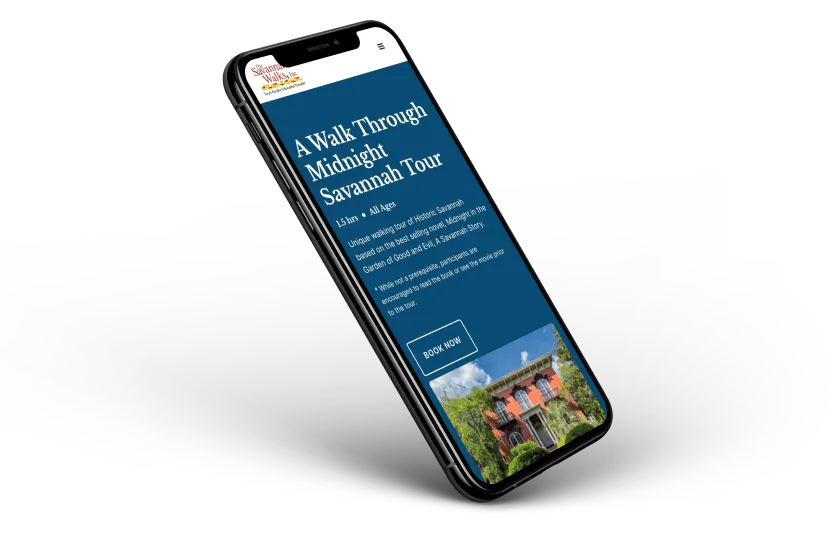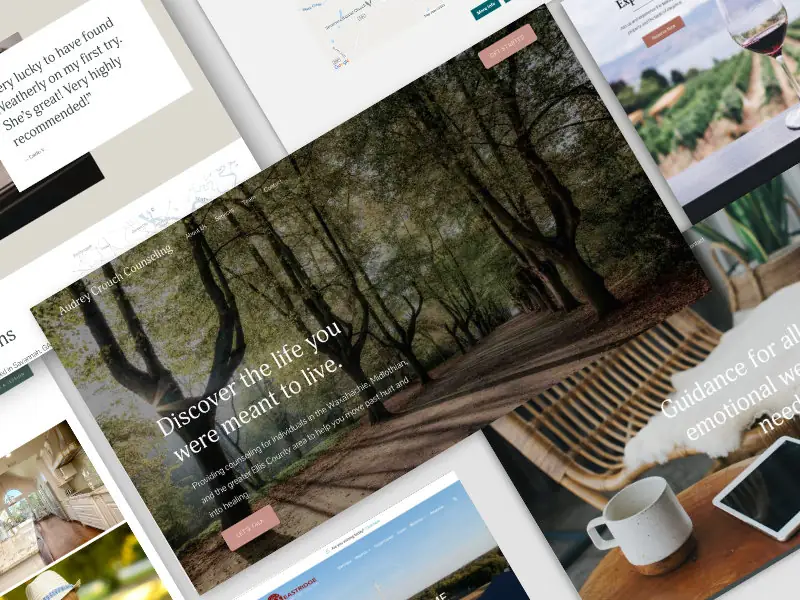SEO
How to Make a Visually Appealing Website That's SEO-Friendly?

Having a website that stands out is crucial for any business or individual looking to make an impact online.
However, it's not just about having a website; it's about having one that is both visually appealing and SEO-friendly.
A website that's a treat to the eyes attracts visitors, while its SEO-friendliness ensures it ranks well on search engines, drawing more traffic.
As Google states,
"Creating compelling and useful content will likely influence your website more than any other factors" (Google).
This powerful combination of aesthetics and functionality is essential in the highly competitive digital landscape.
Understanding SEO-Friendly Web Design
Definition of SEO-Friendly Design
An SEO-friendly website is one that search engines can crawl each page on the website efficiently, interpret the content effectively, and index it in their database.
Once indexed, they can then serve the most relevant and valuable web pages to their users based on the topics they search for.
"SEO-friendly content is the type of content that's created in a way that helps the search engines rank it high."
Importance for Online Visibility
The significance of SEO in web design cannot be overstated. It's not just about getting to the top of a search engine results page (SERP), but about remaining visible to a constantly evolving online audience.
“SEO is essential for greater searchability and visibility, but offers more real value than that.”
An SEO-friendly website serves as a digital beacon for your brand, guiding more traffic to your site and increasing your online presence.
Key Elements of Visually Appealing, SEO-Friendly Websites
Responsive Design
One of the critical components of a modern, SEO-friendly website is responsive design.
This refers to a website’s ability to adapt to different screen sizes and devices, providing an optimal viewing experience.
Google has been prioritizing mobile-friendly websites in its search rankings since 2015, underlining the importance of responsive design.
“Responsive design can help you solve a lot of problems for your website. It will make your site mobile-friendly, improve the way it looks on devices with both large and small screens, and increase the amount of time that visitors spend on your site.”
Fast Loading Times
Page speed is another vital aspect of both user experience and SEO. A slow-loading website not only frustrates users but also adversely affects search engine rankings.
According to a report by kissmetrics,
“A one-second delay in page load time yields 11% fewer page views, a 16% decrease in customer satisfaction, and 7% loss in conversions.”
Thus, optimizing your website for speed is crucial.
This includes minimizing HTTP requests, enabling compression, optimizing images, and leveraging browser caching.
Well-Structured Content
A well-organized website with clear headings, subheadings, and easy navigation is not just user-friendly but also SEO-friendly.
Structured content helps search engines understand your site's hierarchy, enabling them to index your content more effectively.
Using the right header tags is another important aspect of SEO copywriting. Not only do they format your text and make your content easier to read for people, but they also help improve your SEO.
This organization makes your website more scannable and enjoyable for users, enhancing their overall experience.
Visual Aesthetics
The visual appeal of your website plays a significant role in retaining visitors.
Aesthetic elements like color scheme, font choice, and layout contribute to the overall user experience and brand perception.
However, it's crucial to balance these elements without compromising the website's loading speed.
Good design is not just what looks good. It also needs to perform, convert, astonish, and fulfill its purpose. It can be innovative or it might just get the job done.
Quality Content
Finally, the cornerstone of an SEO-friendly website is high-quality content.
Your website should provide content that is engaging, relevant, and valuable to your target audience.
Moreover, incorporating relevant keywords in a natural and reader-friendly manner helps improve your site's SEO.
Michigan Tech, in an article, highlights that, Content quality is an essential factor in SEO. High-quality content tailored to your audience increases site traffic, which improves your site’s authority and relevance.
Technical SEO Considerations for Web Design
URL Structure
A well-thought-out URL structure not only enhances user experience but also improves your site's SEO performance.
URLs should be simple, understandable, and reflect the content of the page.
Moz suggests,
“URLs optimized for SEO tend to be short and keyword-rich.”
They recommend using hyphens to separate words, avoiding unnecessary parameters, and keeping URLs concise and descriptive.
This clarity aids search engines in understanding and ranking your content more effectively.
Meta Tags and Descriptions
Meta tags and descriptions play a critical role in SEO.
They provide search engines with concise information about the content of your web pages.
The meta description is a snippet of up to about 155 characters – a tag in HTML – which summarizes a page’s content.
While meta descriptions don’t directly influence rankings, they impact click-through rates (CTR) by offering a preview of the page content in search results, compelling users to visit the site.
Image Optimization
Images are an integral part of web design, adding visual appeal and supporting your content.
However, improperly optimized images can slow down your website, negatively impacting SEO.
Image optimization involves reducing file size without losing quality.
Tools like Adobe Photoshop or online compressors can be used for this purpose.
Google Developers recommend, “Image optimization is about reducing file size as much as possible, without sacrificing quality, so your page load times remain low.”
User Experience and SEO
User Engagement
The user experience (UX) of a website goes hand in hand with SEO.
A well-designed UX leads to longer dwell times, indicating to search engines that users find value in your content.
The longer users stay on your site, the more relevant your website will seem to search engines. Hence, focusing on a seamless, engaging user experience is crucial for SEO success.
Call to Action
Effective calls to action (CTAs) are vital for both SEO and user experience.
A clear CTA guides users on what to do next, whether it’s to make a purchase, sign up for a newsletter, or contact your business.
This not only helps in converting visitors into customers but also positively impacts SEO by increasing engagement and page interactions.
A call-to-action (CTA) is a button or link that you place on your website to drive prospective customers to convert to leads through landing page forms.
Well-crafted CTAs contribute to a user-friendly design and can subtly boost your SEO by reducing bounce rates and increasing conversions.
Common Pitfalls to Avoid
Overuse of Heavy Media
While multimedia elements like images, videos, and animations can enhance the visual appeal of your website, their overuse can lead to slower page loading times, negatively impacting SEO.
It's crucial to find the right balance.
A study by Google reveals that as page load time goes from one second to ten seconds, the probability of a mobile site visitor bouncing increases by 123%.
Therefore, prioritizing optimization and careful selection of media elements is essential for maintaining both aesthetics and performance.
Ignoring Mobile Optimization
Mobile browsing often surpasses desktop, ignoring mobile optimization is a significant pitfall.
Google's mobile-first indexing means the mobile version of your website becomes the starting point for what Google includes in their index.
Designing for mobile first is not just a trend but a necessity.
Ensuring that your website is mobile-friendly is not just about aesthetics but also about catering to a large segment of your audience and improving SEO.
Neglecting Content Quality
High-quality, relevant content is the backbone of SEO.
Neglecting the quality of your content can lead to poor user engagement and lower search rankings.
Content should be engaging, informative, and provide value to the reader.
Quality content helps to create a good user experience and sends positive signals to search engines, which can improve your rankings over time.
Tools and Resources for Building SEO-Friendly Websites
To assist in the creation and analysis of SEO-friendly designs, various tools and resources are available. For instance:
- Google PageSpeed Insights: Provides performance analysis and recommendations for both mobile and desktop versions of your site.
- SEMRush: Offers a comprehensive suite of tools for keyword research, site audits, and competitor analysis to enhance your SEO strategy.
- Moz Pro: An all-in-one suite of SEO tools that includes site audits, keyword research, and link building strategies.
- Adobe Photoshop or Canva: Useful for optimizing images for web use, ensuring they are visually appealing while maintaining a smaller file size.
- Squoosh.app: This is a great tool for compressing images to webP format.
See our guide to image optimization here.
These tools not only aid in optimizing your website for search engines but also ensure that it remains visually compelling and user-friendly.
Conclusion
Creating a visually appealing website that's also SEO-friendly is a balancing act that requires attention to design, technical SEO aspects, and quality content.
By understanding and implementing these principles, you can enhance your online presence, attract and retain more visitors, and ultimately achieve your digital goals.
Remember, the best way to sell something - don't sell anything. Earn the awareness, respect, and trust of those who might buy.
If you're ready to elevate your online presence with a website that is both stunning and SEO-friendly, consider reaching out to us at CL Creative.
End to End Webflow Design and Development Services
From Web Design and SEO Optimization to Photography and Brand Strategy, we offer a range of services to cover all your digital marketing needs.

Webflow Web Design
We design custom Webflow websites that are unique, SEO optimized, and designed to convert.
Webflow Maintenance
Gain peace of mind knowing that a Webflow Professional Partner is maintaining your website.

Claim Your Design Spot Today
We dedicate our full attention and expertise to a select few projects each month, ensuring personalized service and results.






